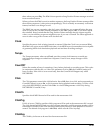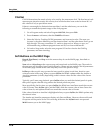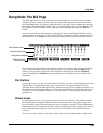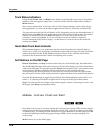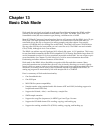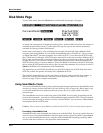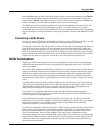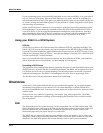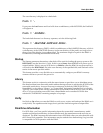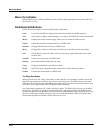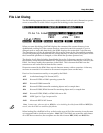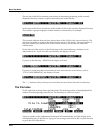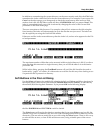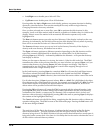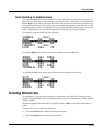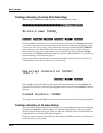
Basic Disk Mode
Directories
13-5
The root directory is displayed as a backslash:
Path|=|\
If you press the Load button and load a file from a subdirectory called SOUNDS, the Path field
will appear as
Path|=|\SOUNDS\
The backslash character is a directory separator, as in the following Path:
Path|=|\NEWTUNE\SAMPLES\DOGS\
This represents the directory DOGS, which is a subdirectory of the SAMPLES directory, which is
a subdirectory of the NEWTUNE directory in the root directory. If the path is too long to fit on
the top line of the display, it gets abbreviated. The maximum length of a path in the K2661 is
64 characters (including the backslash characters).
Startup
The Startup parameter determines what disk will be used for loading the power-up macro file
BOOT.MAC (see the Musician’s Guide). If this is set to None, then the K2661 will power-up in a
normal fashion. If this is set to a SCSI device or SMedia, when the K2661 is next powered on it
will look for the BOOT.MAC file in the root directory of the specified disk, and load each of the
entries in the macro specified within.
This feature provides a very flexible way to automatically configure your K2661’s memory
contents whenever you turn the power on.
Library
This feature works in conjunction with the macro feature to provide a way to distribute macro
files that load data from removable media without having to know in advance the SCSI ID of the
removable-media drive. A macro file stores its references to disks by DISK ID (SCSI ID or
SmartMedia), or by either a “Library” or “Unspecified” designation (see the Musician’s Guide).
Typically, you would set the Library parameter to be the same as the SCSI ID of your CD-ROM
drive, if you were loading macro files from a SmartMedia card or another SCSI disk that
referenced CD-ROM files containing samples or keymaps.
Verify
Set Verify to On when you want the K2661 to verify saves, copies, and backups (the K2661 can’t
verify loads). The operations take longer, but it provides insurance against corrupted files.
Disk Drive Information
For SCSI disks, you’ll see specific information about the current disk’s manufacturer, model
number and internal mechanism; for Smart Media cards, the manufacturer and card size are
displayed. The K2661 requests this information from a SCSI disk when you select that disk with
the Current Disk parameter. This information may be needed when determining if a given disk
is compatible for SCSI operation with the K2661.



